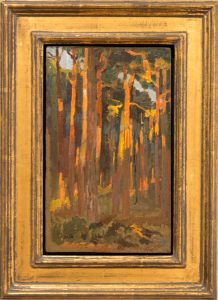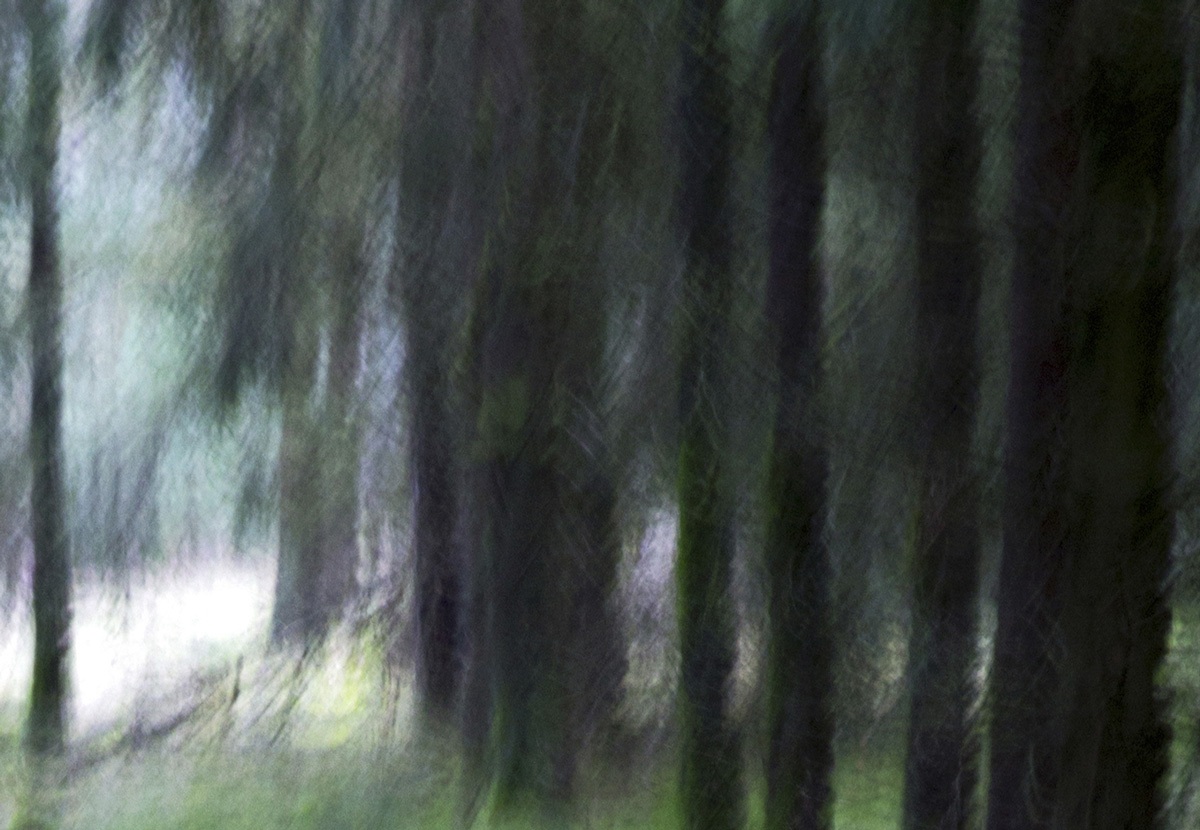Voorjaar 2018 was in het Victoria en Albert museum in Londen een kleine maar prachtige fototentoonstelling te zien rond het thema bomen met foto’s vanaf het midden van de 19e eeuw (Bijv Beech Roots van Charles Thurston Thompson uit 1857) tot recent {bijv. Pine Tree van de Koreaan Bae Bien U). Nederlandse fotografen ontbraken er, maar de foto’s van bijvoorbeeld Alfred Marseille en Geert Mul hadden er niet misstaan.
Bomen, rijen bomen, groepen bomen en bossen hebben altijd de aandacht getrokken; van schilders en later ook van fotografen. Met name bossen hebben vanaf de 16e eeuw tot de verbeelding gesproken. In de romantiek konden de gebroeders Grimm met woorden het beeld oproepen van donkere, enge bossen. Wat later in de 19e eeuw schreef de Duitse componist Robert Schumann negen bostaferelen (‘Waldszenen’, Op. 82) voor de piano. Het Duitse woord Waldszene is betekenisvoller, dramatischer dan het Nederlandse ‘bostaferelen’, maar misschien zijn onze bossen ook minder indrukwekkend dan de Duitse wouden.
Ook Nederland heeft schilders die zich op bossen en bomen (en zelfs op alleen boomstronken – het laatste schilderij van Van Gogh) oriënteerden. Hobbema, leerling van Ruysdael, is een van de bekendste, maar mijn aandacht werd in 2017 getrokken door een klein maar prachtig werk van Theo Goedvriend (1879-1969), geschilderd ergens rond 1910. Het is de aandacht voor de speling van het licht op vooral boomstammen en de sfeer die dat oproept, wat mij in dit schilderij aanspreekt. Zie de foto hieronder, die ik met toestemming mocht opnemen op mijn website.
 Theo Goedvriend (rond 1910-1915); Opgenomen met toestemming van A. Ligthart. (Arnold Ligthart Kunsthandel & Bemiddeling, Amsterdam. www.arnoldligthart.com)
Theo Goedvriend (rond 1910-1915); Opgenomen met toestemming van A. Ligthart. (Arnold Ligthart Kunsthandel & Bemiddeling, Amsterdam. www.arnoldligthart.com)
Nu de natuur en bossen in het bijzonder steeds meer onder druk staan, groeit tegelijkertijd bij velen ook een extra gevoel en aandacht voor die natuur. Ook hier heeft de Duitse taal weer een prachtig woord voor: Naturempfinden.
Mijn serie foto’s is een uitdrukking van mijn Naturempfinden. Dat is bewust niet gedaan door op de gangbare manier te fotograferen: registraties maken van de werkelijkheid. Ik heb niet ‘gewoon’ de knop ingedrukt om via een foto te laten zien wat ik op dat moment zag. In plaats daarvan heb ik mijn fototoestel gebruikt als een middel om de sfeer te vangen, zoals een schilder daarvoor haar of zijn kwast gebruikt. De gedachte hierachter, en mijn eigen ervaring, is dat er een prikkel ontstaat om beter naar een foto gaat kijken als die niet elk detail laat zien, misschien niet ‘in focus’ is en alleen een indruk geeft van de ‘Szene’, het totaalbeeld. Het is nog steeds de werkelijkheid, maar als het ware gezien door mijn bril. Ik laat Waldszenen, stukjes bos of bomen, op een andere manier zien, mijn manier. Niet alleen om expressie te geven aan het gevoel dat ik ervaar in een bos, maar ook in de hoop dat ik die subjectieve ervaring een beetje over kan brengen op degene die naar mijn foto’s van Waldszenen kijkt. Kijk wat langer naar een beeld en verdwijn tussen imposante bomen, tussen een glinsterend bladerdek of in de koele donkerte en stilte van een bos.
Bij geen van deze foto’s zijn speciale fotobewerkingstechnieken, anders dan wat ‘basic photo management’ heet, gebruikt.
De hier weergegeven foto’s zijn een deel van de nog groeiende serie die inmiddels uit meer dan dertig foto’s bestaat. Een klein deel ervan is in 2023 geëxposeerd.
Home >
